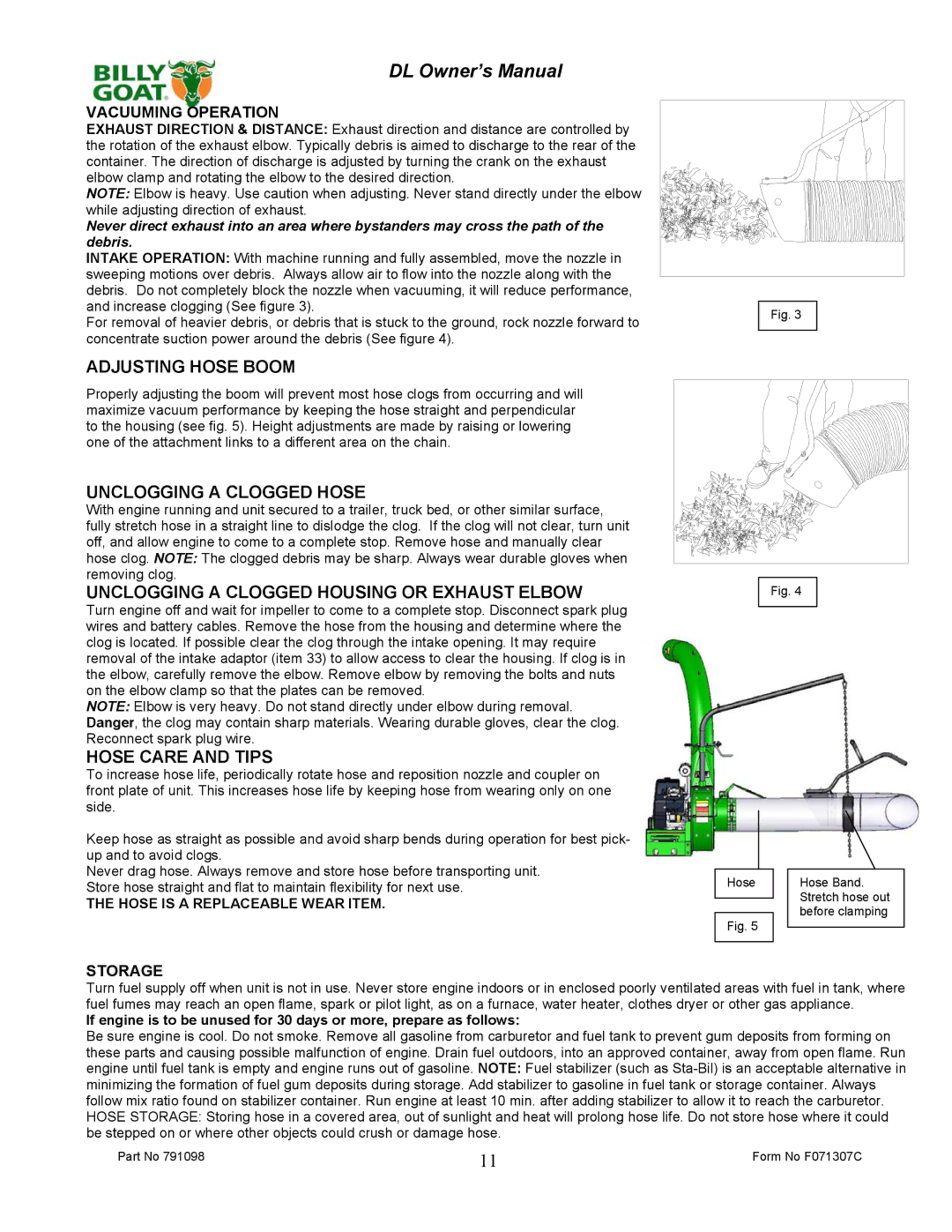DL1800V, DL2500S specifications
The Billy Goat DL2500S and DL1800V are powerful and efficient debris loaders, designed to tackle tough landscaping and yard maintenance jobs with ease. Billy Goat has a longstanding reputation for producing high-quality outdoor equipment, and these models exemplify that commitment to excellence.The DL2500S is equipped with a robust 25 hp engine, providing impressive suction power to efficiently collect and transport leaves, grass clippings, and other debris from yards and gardens. Its innovative design includes a unique impeller system that maximizes airflow, enhancing the loader’s overall efficiency. The machine features a large capacity collection bag, capable of holding up to 2500 pounds of material, which minimizes downtime caused by frequent emptying. Additionally, the DL2500S boasts a heavy-duty steel construction, ensuring durability even under harsh working conditions.
On the other hand, the DL1800V offers a slightly smaller but equally powerful alternative with an 18 hp engine. This model is particularly suitable for residential and light commercial applications, where maneuverability and efficiency are key. The DL1800V is designed with a compact chassis, allowing for easy transport and storage, while still delivering strong sucking power to gather large quantities of debris quickly. It features a shredding capability that reduces the volume of collected debris, making it easier to manage and dispose of.
Both models utilize advanced technologies such as variable speed control, which allows operators to adjust the suction strength based on the conditions of the debris and terrain. This feature enhances versatility, making these loaders effective in a variety of lawn care applications. Moreover, the user-friendly controls ensure that even those with limited experience can operate them efficiently.
Another key characteristic of the Billy Goat DL2500S and DL1800V loaders is their maintenance-friendly design. Easy access points for routine checks and servicing mean that owners can keep their equipment in top working condition without hassle.
In summary, the Billy Goat DL2500S and DL1800V models stand out in the market for their powerful performance, efficient design, and user-friendly features. Whether for professional landscapers or dedicated homeowners, these debris loaders represent a reliable solution for keeping outdoor spaces clean and tidy. With their robust build and advanced technology, they are ideal assets for any landscaping operation.

